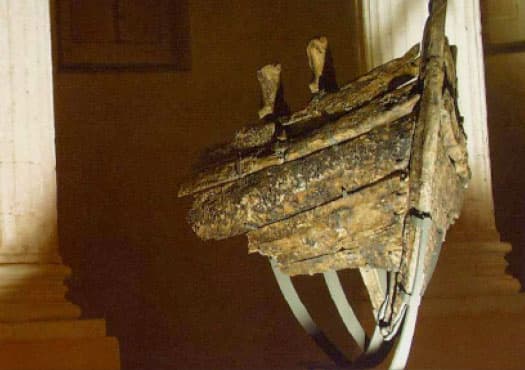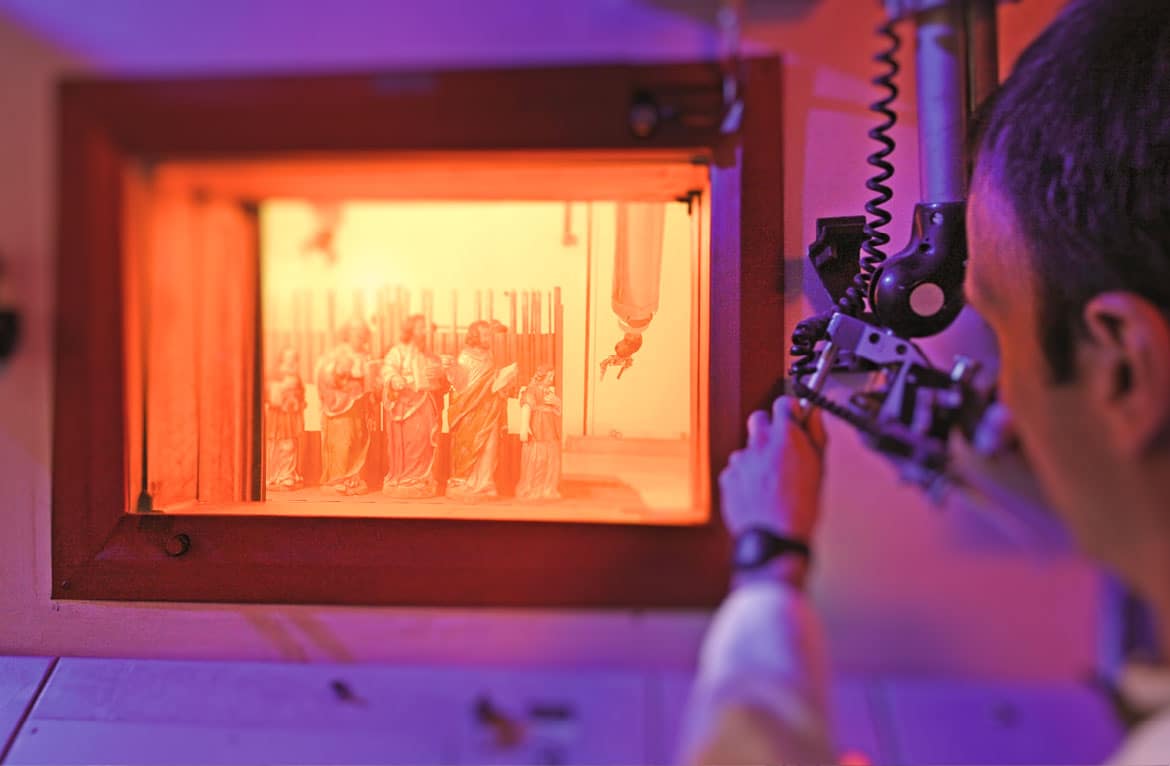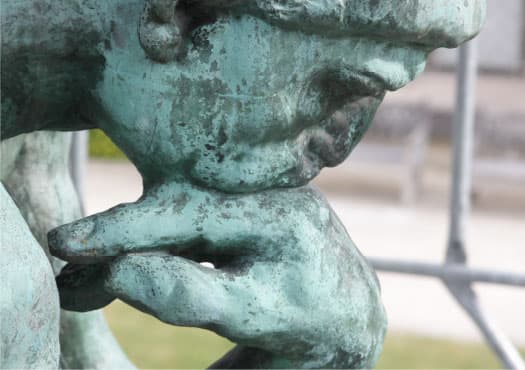
Conserving and consolidating
Preserving the vestiges of the past
TREATING AND CURING
Insects and fungi are the most dangerous vandals. In just a few years, insects with wood-boring larvae (woodworm, lyctus, capricorn beetles, etc.) or wood-eating fungi (wood rot, dry rot, etc.) can completely destroy a piece of wood. Whatever the materials of plant or animal origin, there are numerous insects or fungi, whether or not specialised, capable of breaking it down.
The chemists were the first to take an interest in the conservation of our collections of biodegradable materials, in particular in museums. Arsenic, mercury, bromides were their first tools for preserving stuffed animals, the primary sources of food for numerous guests. In the early 20th century, at the request of Pierre Loti, the mummy of Ramses II was subjected to a bath of mercury salt vapour, to halt the fungal growth encouraged by the hot and humid atmosphere and the biological load in the air, after it was moved from its desert tomb to Cairo. Chemistry is still used as a remedy against fungal species, mainly by fumigation with ethylene oxide (EtO). It extreme toxicity, associated with its ease of dissemination makes it very efficient, but it remains an extremely dangerous and polluting product, with drastic new regulations tending to limit its usage. Its oxidising power is also not without risk for some of the materials present in the collections. Although ineffective against fungi, nitrogen anoxia is also used against insects. Barring a few rare exceptions, it presents little risk for the collections, but its reliability remains its weak point, as it is very difficult to ensure that the diffusion of the nitrogen is such that the lethal conditions required are effectively achieved for the entire object concerned…
Physical treatments using gamma irradiation for their part offer efficacy, reliability and ease of treatment. Thanks to its penetrating power, the certainty of reaching all the volumes of the part to be treated is well beyond that of processes based on the diffusion of a gas or liquid compound. It is not by chance that irradiation is today most trusted by health service professionals. The same applies to heritage conservation. With the gamma irradiator at CEA-Grenoble, remedial disinfestation and disinfection by irradiation have been successfully used at ARC-Nucléart for nearly fifty years now. Tens of thousands of cubic metres of objects from our heritage have already undergone these treatments, in Grenoble and now also elsewhere in the world. When, in 1976, owing to the lack of any real preventive policy, fungicidal treatment had to be carried out again on the mummy of Ramses II, it was this technique that was selected following a large scale test campaign, which demonstrated that its level of harmlessness was satisfactory. n
The dose of radiation needed for biocidal treatment varies according to the target species. It is at least 500 gray (Gy) for insecticidal treatments (deterministic threshold effect) and must be adapted as necessary for fungicidal treatment (disinfection, statistical effect), and can be up to 10,000 Gy (10 kGy). These values are to be compared with the 4 Gy for a lethal dose in humans and 25,000 Gy (25 kGy), the standard dose used for medical sterilisation.
This irradiation in no case leads to induced radioactivity: gamma radiation, like X and beta radiation, is physically incapable of destabilising the nucleus of the atoms it encounters and thus cannot make radioactive products, even if it can have other side effects (see article on “On the compatibility of materials”). The absence of any remanence whatsoever, whether chemical or other, is also one of the strong points of the technique, even if it means that there is also no preventive capability. Among the other advantages of this method, is the fact of being able to treat the entire mass, with no contact, through a packaging if necessary, which avoids repeated direct handling and the corresponding risk of damage to fragile objects.
This treatment is therefore well-suited to the disinfestation of furniture, statues, ethnographic objects, stuffed specimens, mummies and other organic heritage objects. As for the disinfection of fungal species, this is used when simply controlling the climate is not sufficient to stop their growth and the corresponding devastating effects. In exceptional circumstances, bactericidal treatment may even be used, nor so much for direct reasons of conservation, but more for health reasons, in which case it is all the more effective on the traditional pests. This was for example the case of the Khroma frozen baby mammoth found in Yakoutia but whose flesh was so well-preserved that there were fears that it might be contaminated by an ancient form of Bacillus anthracis. In so doing, this treatment also delayed the bio-decomposition phenomena which would no doubt have appeared faster during the thawing phase needed to allow the study to take place. New applications have recently been successfully tested (see article “New applications of gamma irradiation”). n
Glossary
Gray (Gy): unit of absorbed dose of radiation
Bacillus anthracis: bacillus responsible for the anthrax disease
Permafrost: soil frozen for thousands of years, typical of the arctic regions
 More (3 min.)
More (3 min.)
The notion of the compatibility of materials is thus closely linked to the dose. Transparent materials are the first to react. Glasses, crystals or transparent gems may become opaque or tinted under irradiation, sometimes with doses of as little as one kGy. These variations in optical appearance, linked to the trapping of radiation-excited electrons in the vicinity of impurities forming colour centres, are however often reversible, at least in part. Whatever the case, the rule is to exclude them from these treatments. Other less translucent but particularly clear materials such as marble, ivory, bone, white porcelain can also take on a perceptible yellow or grey hue at disinfection doses approaching ten kGy, but this remains virtually invisible at disinfestation doses. The conventional pigments and binders used in ancient polychrome objects are stable up to far higher doses.

Disinfestation treatment by gamma irradiation of polychrome wooden statues - © ARC-Nucléart.
 More (1,30 min.)
More (1,30 min.)
In March 2014, two buildings of the National Archives on the Fontainebleau site were closed owing to structural problems. The first persons authorised to enter one of them fifteen months later discovered a major problem: the entire 5th basement, which housed the private archives of architects and naturalisation dossiers dating back to the 1930s, was under 5 cm of water. Mould, resulting from the presence of water for several months had seriously affected more than half the archives. Faced with more than 11 km of shelving to be treated (more than a thousand m3), the National Archives rapidly realised that the treatment times in the ethylene oxide treatment units it had used until then were not acceptable. Despite fearing the side-effects of ionisation by irradiation treatment of the archives, the National Archives considered and finally selected this technique for this large-scale operation.
The results of the microbiological analyses had revealed four main strains belonging to two different genera, Aspergillus and Penicillium, for which a dose of 3 kGy proved to be sufficiently effective. The decision was then taken to treat the vast majority of the archives in an industrial irradiator using the automated processes applied for medical sterilisation. The architect archives, which on the one hand comprised various materials whose reaction to irradiation required further studies and, on the other, comprised formats which could not be palletised, were treated in the ARC-Nucléart irradiator in Grenoble. A total of 54 “treatment units” comprising 482 rolls and 443 portfolios of drawings and about twenty large-sized boxes, known as “coffins” were irradiated at between 3 and 10 kGy in Grenoble, along with 1,170 pallets containing 56,000 standard archive boxes in the industrial irradiator at Marcoule, at the same doses.
These ancient and more recent architect archives and naturalisation dossiers were treated in less than a year and are now available, both for private administrative purposes for those who need them and for researchers looking at the various naturalisation policies over the periods surrounding the Second World War. n
 More (1 min.)
More (1 min.)

Conserving and consolidating

Conserving and consolidating

Analysis and restoration